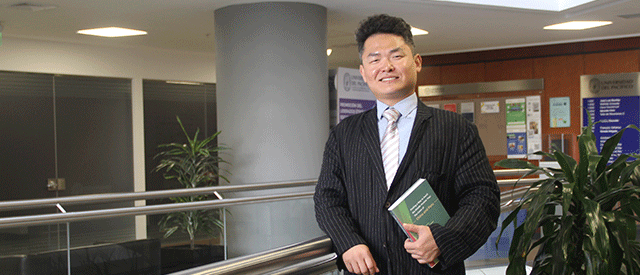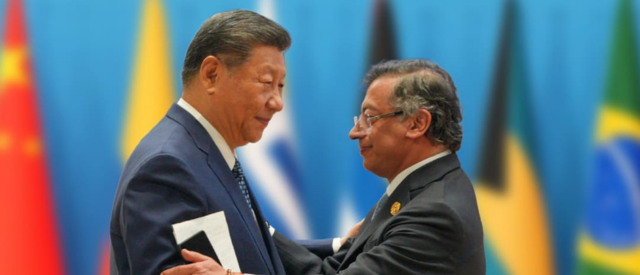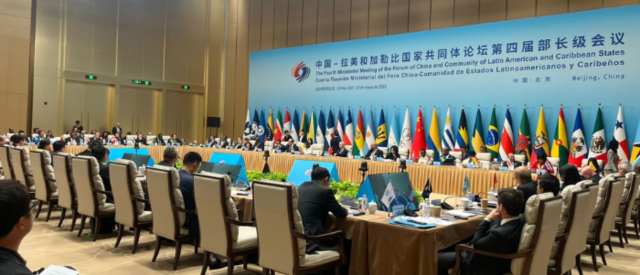
Opinion article by Dr. Shi Shuo, from Fudan Development Institute (FDDI), who has been a visiting scholar at CECHAP 2023 – 2024.
China’s recent economic indicators are better than most expected. On April 16th, 2024, the National Bureau of Statistics (NBS) of China released macroeconomic data for the first quarter, showing that the Gross Domestic Product (GDP) grew by 5.3% year-on-year. Just a few months ago, however, many international media outlets and economic pundits challenged that China could endure debt pressure, demand deflation, production overcapacity, and inefficient investment, with more trade and investment constraints by the United States. So, does China stand on a solid track of economic recovery? Or is it merely a false signal? More importantly, what does China’s growth outlook mean for trade partners in Latin America?
In the first quarter of 2024, despite multiple internal and external headwinds, China came through economic downturns with strong performances in critical growth drivers. In terms of consumption, the total retail sales of consumer goods increased by 4.7% year-on-year. National fixed asset investment (excluding rural households) increased by 4.5% year-on-year. By sector, infrastructure investment increased by 6.5% and manufacturing investment increased by 9.9%. Moreover, China’s goods trade import and export exceeded 10 trillion yuan (around 552 billion U.S. dollars) for the first time.
The inflation level was also comforting. In March, the year-on-year increase in the national consumer price index (CPI) was 0.1%, with a month-on-month decrease of 1.0%, showing the demand underwent a mild recovery.
In 2023, China’s industry once confronted severe contraction, with a 5.4% year-on-year decrease in the national industrial producer price index (PPI) in the first half of the year. By contrast, in the first quarter of 2024, PPI only decreased by 2.7% year-on-year, indicating a significant correction of industrial overcapacity.
To be sure, China’s real estate market was still glooming. In the first quarter, real estate development investment decreased by 9.5% year-on-year. In 70 large and medium-sized cities surveyed by the NBS in March, the month-on-month sales prices of newly-built residential properties in first-tier cities decreased by 0.1%. Among them, Beijing remained unchanged, Shanghai increased by 0.5%, while Guangzhou and Shenzhen decreased by 0.7% and 0.4% respectively.
Nevertheless, China still enjoyed an upturn in consumption and industry. According to data from the Ministry of Culture and Tourism, the number of travelers and tourism spending during the Spring Festival holiday exceeded the levels of the same period in 2019, with a year-on-year increase of 34.3% in tourist trips. In the first quarter, the service industry amounted to 55.7% of economic growth; exports improved, driving a 6% increase in industrial value-added in the first quarter, showing a significant rebound compared to last year. Preliminary estimates indicate that in the first quarter, the contribution of industrial growth to economic growth was 37.3%. As a result, labor market anxiety was soothed. The national urban surveyed unemployment rate was 5.2% in March, which was acceptable relative to previous records.
What has China done right to regain economic growth momentum? In addition to adopting a Keynesian expansionary fiscal policy and a prudent monetary policy for bailing out the private sector, China has focused on industrial upgrading from low-value-added manufacturing to high-tech industries over the past decade, resulting in high-performance productivity and lucrative business patterns. One of the most outstanding cases is that China surpassed Japan and became the largest auto exporter by selling 4.91 million vehicles to the global market in 2023. Although exports of gasoline vehicles reached 3.707 million units, an increase of 52.4% year-on-year, exports of electric vehicles reached 1.203 million units, a striking 77.6% year-on-year increase. Moreover, Chinese firms were highly competitive in lithium battery and photovoltaics products compared to their global counterparts.
In the wake of China’s economic recovery and industrial upgrading, Latin American countries (LACs) stand a new chance to reshape their economic relations with China. While China’s demand for metals and critical minerals extracted in LACs will remain strong, LACs should pay more attention to China’s latest emphasis on investing in “new infrastructure” projects in the global south. On November 21st, 2021, Chinese President Xi Jinping laid out the fundamental principles for the next stage of the Belt and Road Initiative (BRI). Specifically, Xi encouraged Chinese companies and regulatory bodies to prioritize “small and beautiful” international cooperation projects and avoid “dangerous and turmoiled” ones. Beijing’s pivoting from white-elephant projects to “small and beautiful” ones has mobilized Chinese overseas entities to heavily invest in “new infrastructure,” encompassing electric vehicles, high-end manufacturing, information and communications technology (ICT), renewable energy, and urban infrastructure, which are innovation-related and key for China’s enhancing global competitiveness in high tech sectors.
As the China-LAC report 2024 by the Inter-American Dialogue shows, Chinese investment in the region’s EV industry skyrocketed in 2022 to $2.2 billion, taking up 35 percent of the total value of Chinese FDI that year. In June 2023, a Chinese consortium led by Contemporary Amperex Technology Co (CATL) committed a 1.4 billion U.S. dollar investment to develop Bolivia’s lithium resources. Moreover, since the pandemic, China has been increasing its greenfield investment in medical manufacturing in Mexico and Brazil and, to a lesser degree, in Colombia, Ecuador, and Chile.
As the second largest recipient of Chinese foreign direct investment (FDI), only following Brazil over the last two decades, Peru has concentrated a significant amount of Chinese FDI in its extractive sector. However, Peru should also understand that a diversified FDI structure with more emphasis on high-end manufacturing, energy transition, and other innovation-driven projects can greatly benefit the country’s upgrading in the global value chain in the long term. To attract FDI from China and advanced partners in “new infrastructure,” Peru should take strategic advantage of the soon-to-be-built Chancay Port by planning affiliated manufacturing parks, promoting an innovation-related investment environment, and upgrading its free trade agreements with global technological frontrunners.

